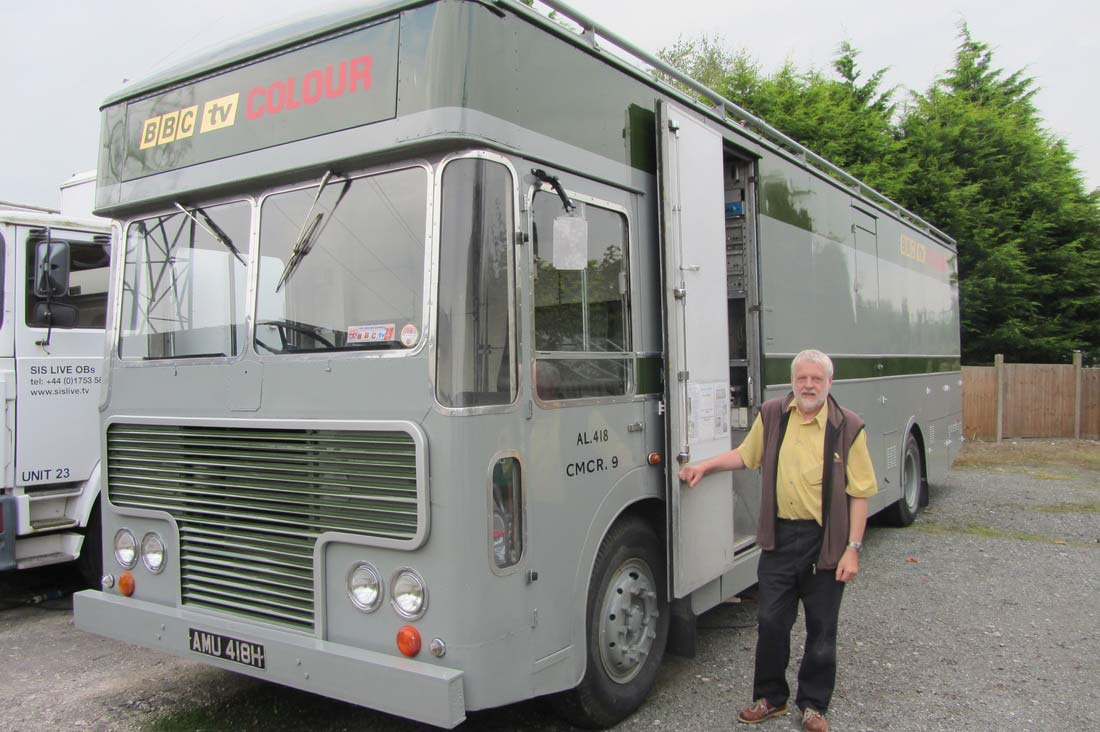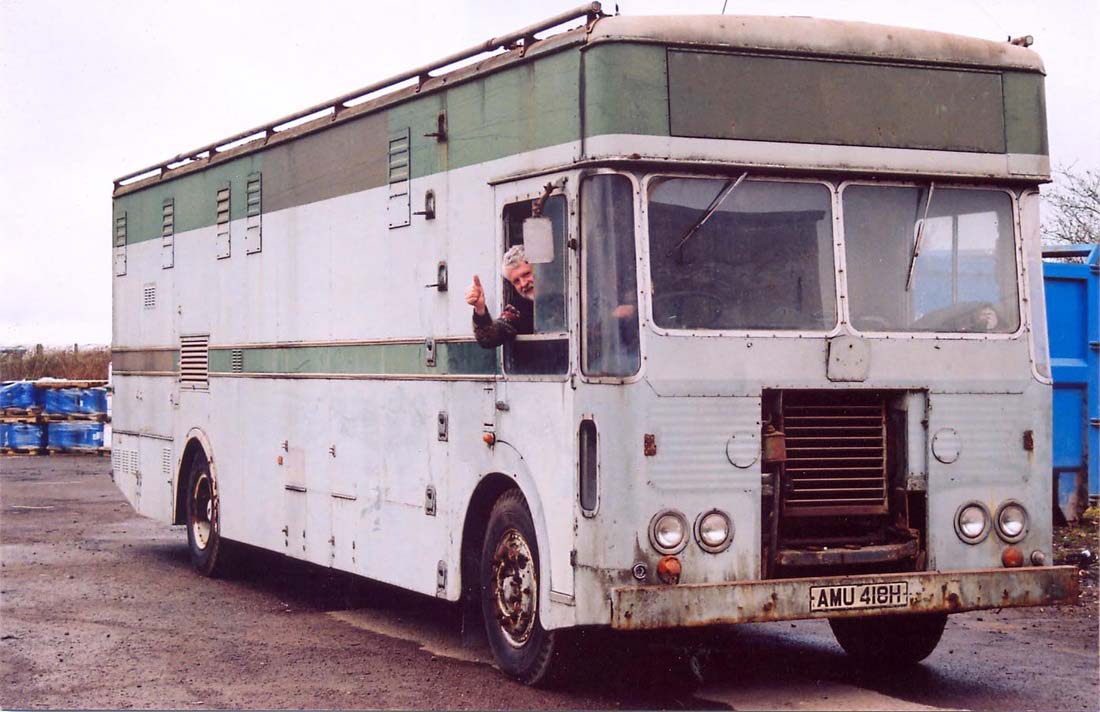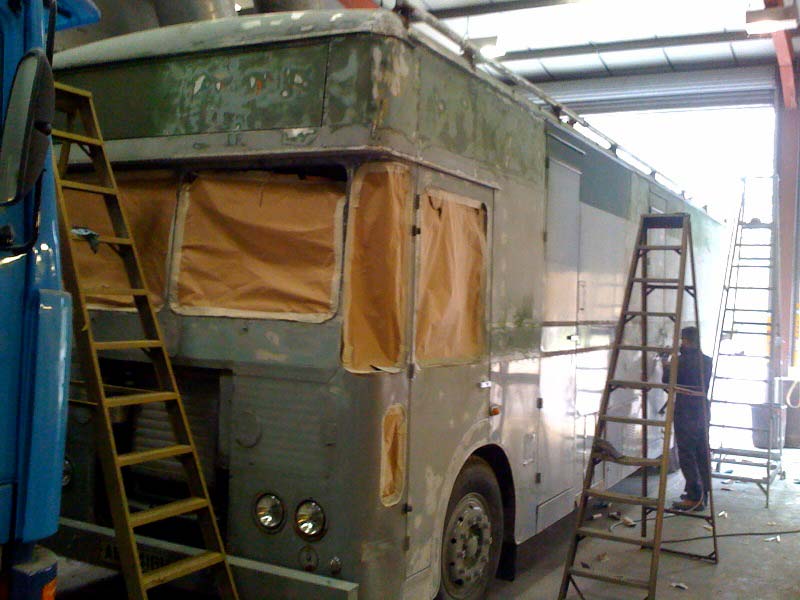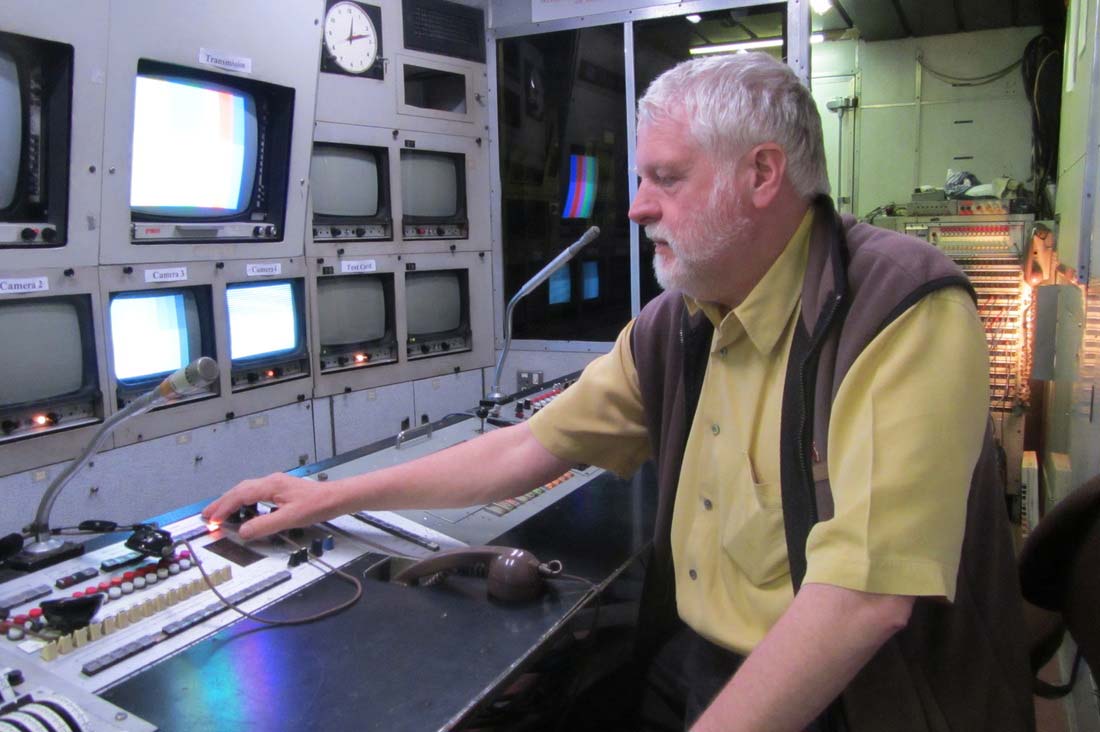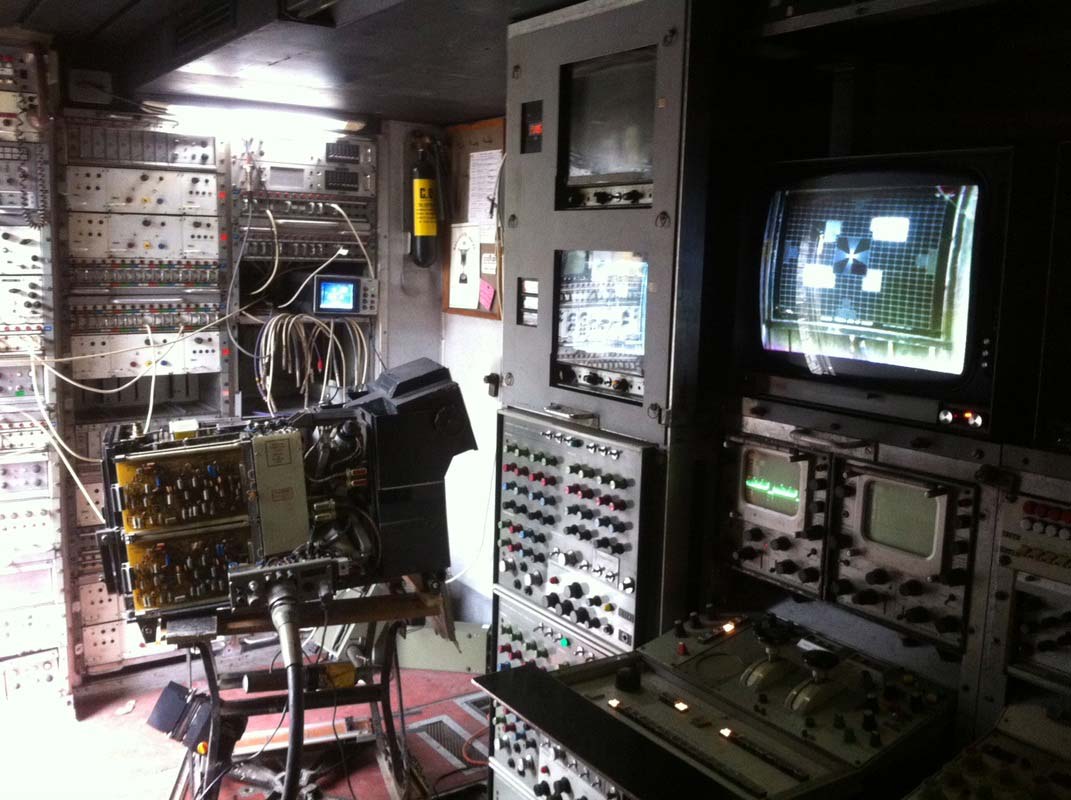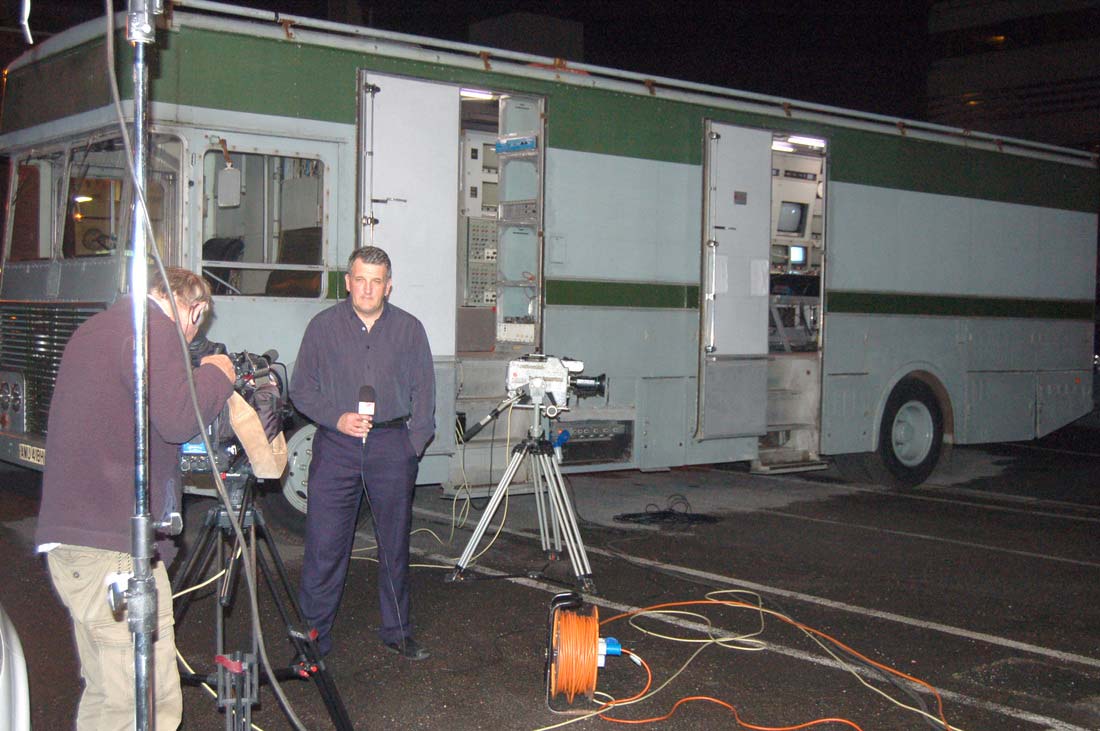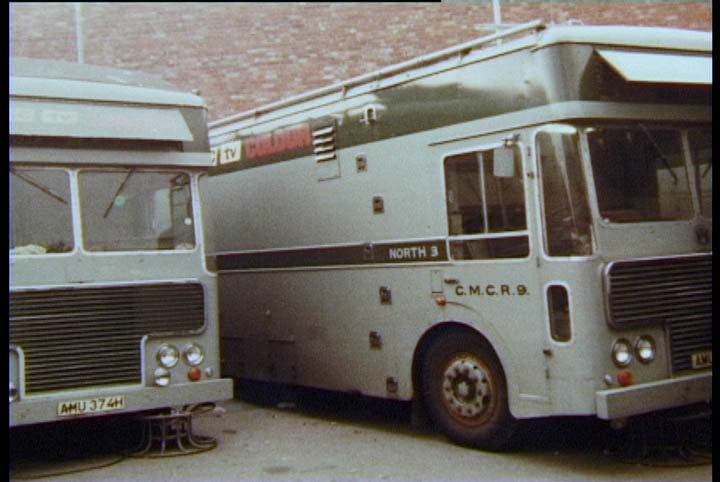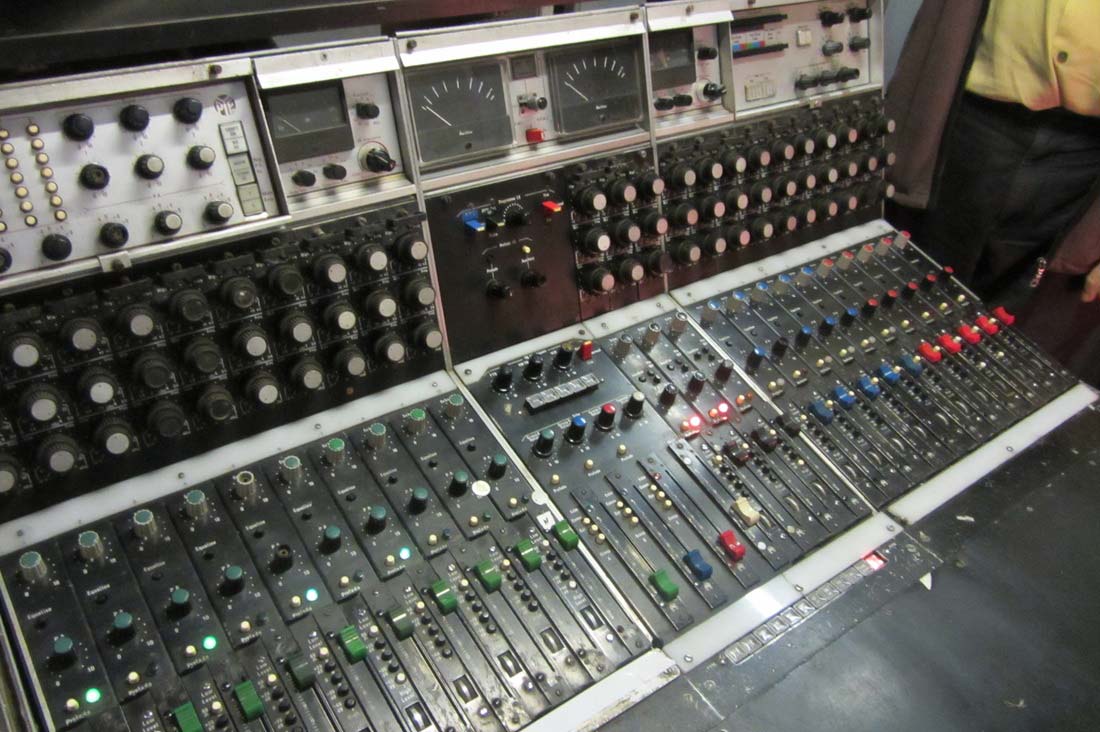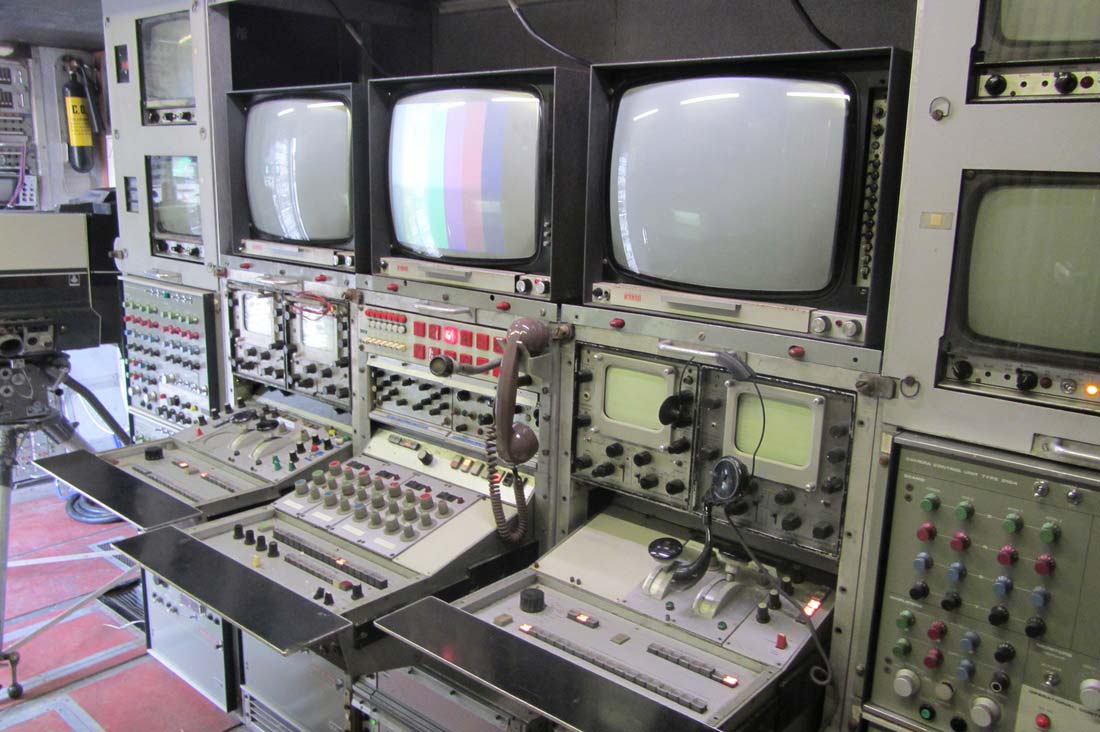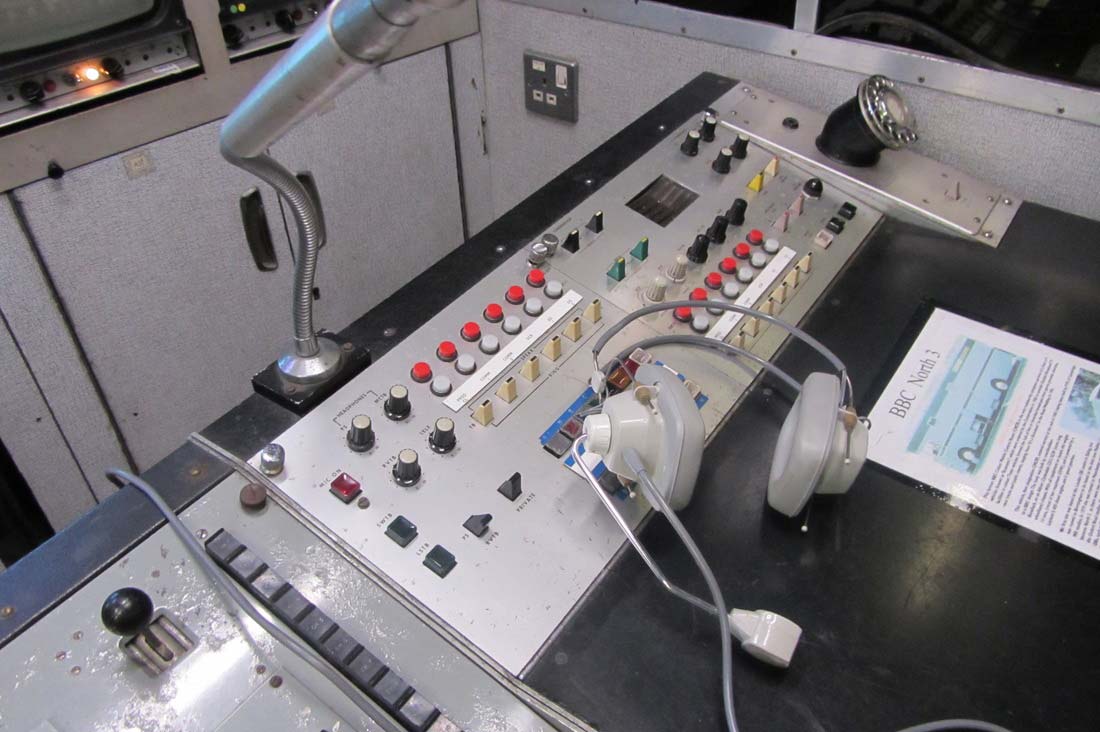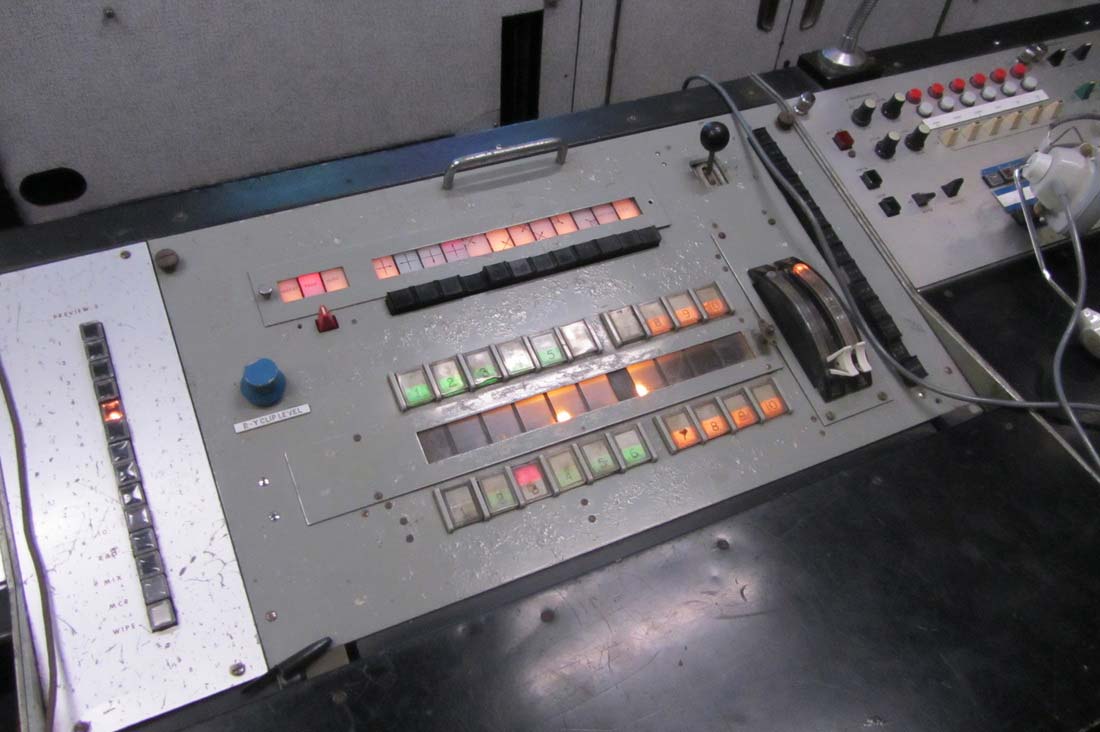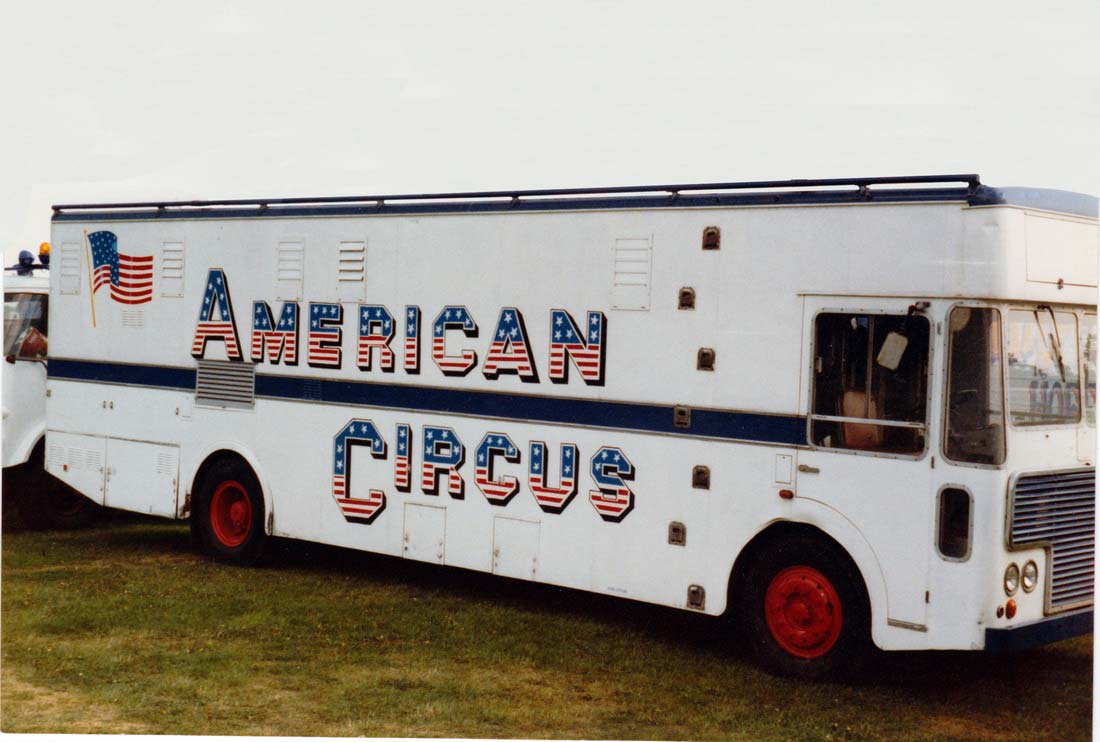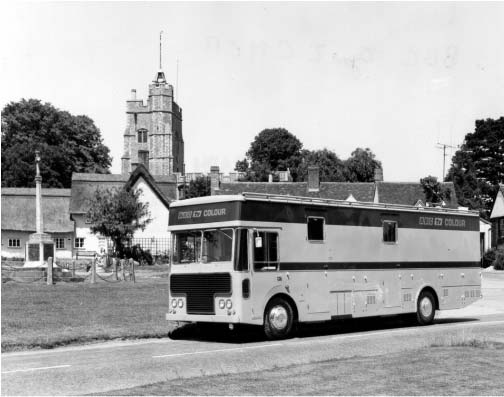The Restoration of North 3
Steve Harris is no stranger to restoring television equipment. After working in broadcast television, Steve went on to start a museum in Chester dedicated to radio and television broadcasting in the UK. When the lease on the building ended six years later, Steve sold the museum collection to the BBC. He then formed ‘On The Air’, a company based near Chester that sells vintage radio and television sets.
Alongside Steve’s business, there was a lifelong ambition to restore a complete television outside broadcast unit. When Steve saw an advert for an ex-BBC Type 2 colour mobile control room, it was the start of what was to become a very major restoration project. Steve, “I went to see it, hoping to buy it and restore it, but seeing it I was sadly disappointed. It was in a terrible state; having been outside in a yard for more than twenty years, in a salty climate near Rye with windows open. The engine was seized, the inside was corroded, birds and mice having made nests inside the equipment racks! Such a shame, it was absolutely complete, with the original Pye PC80 cameras, the full sound desk, everything just as it left the BBC in 1981. In the end I decided it was an impossible project, but agreed a deal to buy the cameras and anything else I wanted from inside the truck. It was very sad to destroy this piece of history, and much of it did not really seem worth saving. Three trips were made to strip out the equipment – tiring, dirty work, and a 500 mile round trip each time. Screws were rusted solid and hardened rubber covered cables had to be cut through.’
The BBC Scanner Steve found in the field near Rye was CMCR7, one of nine colour mobile control rooms designed by the BBC and built by Pye TVT. They were numbered CMCR 4 to 12. Six of the units were equipped with EMI 2001 cameras while CMCRs 7,8 and 9 had Pye PC80 cameras. The first three colour control rooms CMCR 1 to 3 were designed and built by the BBC. They used four Pye PC60 cameras. The first unit was completed in June 1967 and was used to broadcast Trooping the Colour in that year as a test transmission for BBC2. The three Type-1 control rooms went on to be used in London and then the regions, before being replaced by Type 2 units. There is no knowledge as to the fate of the three original colour control rooms.
Type 2 units differed quite dramatically from their predecessors. The biggest change was that the layout is longitudinal instead of the traditional transverse. Thus there are separate compartments for vision, production and sound down the length of the vehicles making it 35 feet long. The first three Type 2 units CMCR 4, 5 and 6 were delivered in 1969 in time to cover the Investiture of the Prince of Wales in July of that year. The Type 2s became the backbone of BBC’s OB fleet throughout the 1970s being replaced by Type 5s in the 1980s.
Then some of the Type 2s were literally ‘put out to grass’ as Steve found out when he went to Rye; another, C 4, was spotted in a field near Boscastle in Cornwall; a third joined a circus and became the booking office and C 10 landed up in the Science Museum store at RAF Wroughton, but so far no work has begun on its restoration. The lucky one was C 9, which ended its BBC life as North 3 unit in Manchester before being sold in 1982. It was a telephone call in 2009 from the owner of North 3 saying that he was willing to sell the OB truck that proved too much of a temptation for Steve Harris. For the majority of the time after it was decommisioned from the BBC, North 3 remained in a former aircraft hanger in Devon where, although out of the weather, damp continued to attack the bodywork and electronics.
Steve “I wanted to restore an OB vehicle with an interesting history, and after locating C 7, which was just too far gone to be a realistic proposition, the temptation to take on what looks like a lifetime’s work was too great to resist.
I have never tried to restore a commercial vehicle before, and this is a big one, 35 feet long and weighing 14 tons. The first obstacle to overcome was getting it back from Devon to Chester. I went down to view it and see what I thought. It was a disappointment to see that in some ways it was worse than I expected, as it had got damp and mouldy inside, all the aluminium surfaces were covered with white. However, I went again with batteries and to my surprise after a few turns on the starter, which I was expecting just to free it and build up oil pressure, she began to kick and after another go with the cold start pressed in she fired up with a mighty roar (most of the exhaust had fallen off) and filled the hangar with eye-watering smoke. Initial joy at starting up was tempered by the discovery that there was no clutch operation, water was leaking everywhere and the brakes were seized solid. All the usual problems of a long stored vehicle, plus the electronic units containing thousands of components, many of which would now be corroded and useless. The technology is both complex and obsolete, and much of it unfamiliar. Even assuming I could get it roadworthy, I didn’t have an HGV licence. The cost and time involved in repairing it would bring out the question ‘Why?’ from everyone I would meet, and raise doubts (even to me) about my sanity.”
Many months of work followed restoring the bodywork, the Albion chassis and engine so that North 3 could make its ‘Phoenix’ appearance at a steam festival in 2010 although work on the electronics had barely started and it would be another two years before the unit would be given new paintwork. By this time Steve was being helped by former BBC Manchester Audio Supervisor, Jerry Clegg. Steve ‘He was willing to come over and help with cleaning and painting, which began to transform C9. She was beginning to look ship-shape rather than like a sunken ship dredged up from the depths. This gave me encouragement to tackle some non-urgent jobs, such as getting some units out and taking them back to the workshop.
Work carried on gradually getting the vision side of North 3 working. Largely thanks to the help of engineer Steve Jones, whose first job in the BBC was working on North 3, the team got pictures through the vision mixer and sorted out the pulse distribution amplifiers. Nearly all the distribution amplifiers needed repairing so that the signals could be routed via the correct positions on the jack-field. All the Pye monitors in Vision Control and all the lower row in Production were checked or overhauled, but they only managed to get one Prowest monitor working properly.
Towards the end of 2013 work started on two of the original cameras. Steve Jones started on one of the Pye PC80s and Steve Harris started on the first EMI 2001. Steve, “The PC80 only needs mixed syncs and mixed blanking, but the 2001 needs line and field drives as well. These are of course not present on the Pye camera vehicles, but fortunately the outputs are available at the pulse distribution amplifiers, so it was not too hard to run extra cables in the ducts. With everything connected, including the waveform monitor, it was time to switch on and check the voltages at the PSU meter. Some are available before the head is connected, but there is a safety interlock which needs to see the 6.3V heater supply at the head before the HV supplies will go on, so you don’t get a cable end with 700v on it flailing about on a muddy race course. The first check seemed fine, the CCU and GP supplies showed OK. I connected a length of G101 cable to the head, and fired up. Fizz, BANG! Bits of foil all over the floor, and lots of smoke. A capacitor in the HV supply had blown up, and another was too hot to touch, so they were replaced and the mess cleaned up. The second time, no pyrotechnics
and after a while some vague waveforms showed on the monitor. Test signals seemed to be viable after a couple of false starts and one or two faults were found and attended to. Eventually, I switched the beams on. Would there be any output from the tubes? Yes! The viewfinder was not working and the lens controls only occasionally twitched; the zoom and focus were seized. The blue image was way off to one side and the controls had no effect and of course the registration was way out. Unless you wanted to represent an LSD trip in a 70s drama, it was not a great picture, but after tweaking the lens by hand, a recognisable picture was on the monitor after at least twenty odd years. Over coming weeks it was improved, but several times a fresh switch-on brought more faults. It was tempting to keep board swapping with the other cameras, and plenty of this was done, but where possible I tried to keep to the original boards and repair the faults. As of April 2014 it has been gradually improved but it has been a two steps forward, one back scenario. There is an inevitable ‘bathtub curve’ as old equipment is re-commissioned, but so far the reputation for reliability that these superb cameras had in service has held-up. The PC80 has shown steady progress, but as it was in a much worse state than any of the 2001s after over 20 years in a damp environment, it is a slow process, but it is getting there. As yet, nothing impossible to fix has come to light.’
Towards the end of 2013 work started on two of the original cameras. Steve Jones started on one of the Pye PC80s and Steve Harris started on the first EMI 2001. Steve, “The PC80 only needs mixed syncs and mixed blanking, but the 2001 needs line and field drives as well. These are of course not present on the Pye camera vehicles, but fortunately the outputs are available at the pulse distribution amplifiers, so it was not too hard to run extra cables in the ducts. With everything connected, including the waveform monitor, it was time to switch on and check the voltages at the PSU meter. Some are available before the head is connected, but there is a safety interlock which needs to see the 6.3V heater supply at the head before the HV supplies will go on, so you don’t get a cable end with 700v on it flailing about on a muddy race course. The first check seemed fine, the CCU and GP supplies showed OK. I connected a length of G101 cable to the head, and fired up. Fizz, BANG! Bits of foil all over the floor, and lots of smoke. A capacitor in the HV supply had blown up, and another was too hot to touch, so they were replaced and the mess cleaned up. The second time, no pyrotechnics
and after a while some vague waveforms showed on the monitor. Test signals seemed to be viable after a couple of false starts and one or two faults were found and attended to. Eventually, I switched the beams on. Would there be any output from the tubes? Yes! The viewfinder was not working and the lens controls only occasionally twitched; the zoom and focus were seized. The blue image was way off to one side and the controls had no effect and of course the registration was way out. Unless you wanted to represent an LSD trip in a 70s drama, it was not a great picture, but after tweaking the lens by hand, a recognisable picture was on the monitor after at least twenty odd years. Over coming weeks it was improved, but several times a fresh switch-on brought more faults. It was tempting to keep board swapping with the other cameras, and plenty of this was done, but where possible I tried to keep to the original boards and repair the faults. As of April 2014 it has been gradually improved but it has been a two steps forward, one back scenario. There is an inevitable ‘bathtub curve’ as old equipment is re-commissioned, but so far the reputation for reliability that these superb cameras had in service has held-up. The PC80 has shown steady progress, but as it was in a much worse state than any of the 2001s after over 20 years in a damp environment, it is a slow process, but it is getting there. As yet, nothing impossible to fix has come to light.’
C 9 has certainly come a long way since it was conceived in the late 1960s. Its life at the BBC started as LO5 based at Kendal Avenue, covering Match of the Day from Tottenham on the 30th January 1970. In the same year, other notable OBs were: The Boat Race, Royal Ascot, the Open Golf from St. Andrews, the Commonwealth Games from Edinburgh and the Royal Variety Performance from the London Palladium. It was the only Type 2 in London that was equipped with Philips PC80 cameras. LO5 was the scanner used for the live climbing of South Stack (Anglesey) by Joe Brown, Hamish Macinnes and others, in August 1970. This was the first colour live climbing programme, following on from the success of earlier programmes such as the ascent of the Old Man of Hoy in the 1960s. It was a triumph of technical ability by the BBC, a world first. The reason LO5 was used was that the Pye PC80 cameras could be run on up to 5,000 feet of cable, using specially-built equalizing amplifiers. No other cameras could operate on that length, essential to get from the only accessible point to the camera positions needed to get shots of the rock face.
Around 1972 C 9 was swapped with Birmingham for an EMI equipped scanner, C 6, which became LO5. This meant the London fleet was now all EMI. During her time at Birmingham C9 was called CM1 (Colour Midlands 1), and of course covered many events all over the Midlands including Gardeners World. In April 1980 C 9 was moved from Birmingham to Manchester to join C 7 and 8, the other Pye equipped vehicles. It then became known as North 3. The first OB as N3 was a football match from Manchester City FC. After 1982 North 3 would spend 27 years slowly deteriorating in the West Country before Steve Harris started to bring her back to life. Now nearly fully restored, North 3 is once again parked outside a BBC building at Salford Quays. This time the restored BBC Outside Broadcast unit is part of the 2014 Manchester Science Fair, encouraging both young and old to take an interest in television broadcasting and the technology behind it. Here, for the first time, Steve was able to show off the pictures from the PC80……… probably the only working example in the UK.
